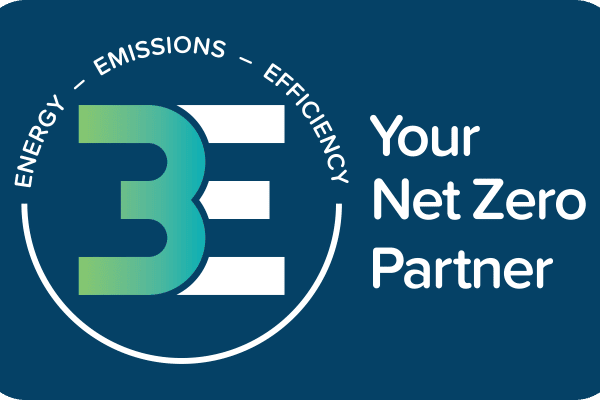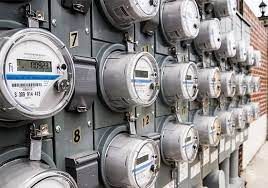The start of a new financial year is typically an optimistic time for most Australian organisations as they review business performance for the 12 months prior and set priorities and budgets for the fiscal year ahead. In many ways a fresh start. Troubling times are on the horizon, however, as major hikes in energy prices will take effect from July 1, adding substantial pressure on all budget-conscious organisations and households.
Three Energy Retailers have recently announced that customers should expect a significant increase in energy rates. Energy prices are set to rocket by up to 20 per cent for the average customer (households and small businesses) in some states.
But for large energy users, it’s a different proposition altogether. According to contract rate cards for large market electricity prices, prices are set to more than double and in some states treble over the next 12 months.
Why are prices increasing? For a start, it’s important to understand how energy gets to you, to understand the nature of the energy market and how energy prices are set.
Energy travels through four main stages on its journey from generation to the point where you turn on a switch. Each stage incurs costs that contribute to the total cost of your energy bill. Any changes in these four main areas influence the final price you see on your bill.
- Generation – Wholesale Costs.
Wholesale costs are incurred to purchase electricity and gas from generators and producers. - Distribution and Transmission – Network Charges: Costs charged by distributors for energy transmissions, metering and maintenance of the pipes, poles and wires that deliver your energy.
- Retail charges – cost incurred by retailers to supply energy to customers. Retailers add service charges for servicing and billing your account. Retailers compete for customers on price and other services.
- Other costs or “Environmental Charges” – incurred by retailers to comply with government schemes such as Renewable Energy Targets.
Retailers blamed recent rises in wholesale prices following the closure of large coal-fired power stations, as well as increased demand for gas for export.
In the past 12 months alone, wholesale prices for both electricity and gas have surged, almost doubling and even trebling in some states.
Retailers would eventually pass on the full extent of wholesale price increases directly to their customers.
The Australian Energy Market Operator (AEMO) recently published wholesale energy prices dating from 1999 through to 2017, illustrating the extent of the unprecedented volatility in the energy market over the last two years.
Investment in new generation vs plant retirements
According to a recent State of the Energy Market Report published by the Australian Energy Regulator:
The flattening of electricity demand from 2008, along with incentives to invest in renewable plant, led to an oversupply of generation capacity for several years. In response, significant capacity was permanently or temporarily removed from the market.
The problem however, is that more capacity was withdrawn from the market during 2011-2016 than was added through new investment over that period. This, coupled with more demand of but less supply of gas in the domestic market, has driven up gas prices and wholesale energy costs – putting upward pressure on energy prices charged to businesses and consumers.
The below chart illustrates the rapid retirement of coal powered generation capacity over the last five years, which has heavily outweighed any form of renewable sources of generation capacity coming online over that period.

…More capacity was withdrawn from the market during 2011-2016 than was added through new investment over that period.
Compounding this problem is the current state of the gas market.
According to industry experts, gas prices have increased because all the cheap gas has been developed, so it is costing more to get gas out of the ground. The Bass Strait and Cooper basin producers are now selling their gas to the Gladstone LNG exporters, who contracted to sell overseas more gas than they can produce.
In response, the Federal Government recently announced its plan to restrict gas exports – the latest application of knee jerk reaction band aid policy. This will be applied in early 2018, but time will tell whether or not that will be an effective remedy. Meanwhile, we are all in for massive bill shock.
Those increases to energy prices (leaving aside the likelihood of blackouts) will transform the economics of vast numbers of employment-creating Australian businesses and households. The impact of rising energy prices will be felt by all Australians: Households, businesses, industrial and government organisations across all sectors. Everyone.
Large Energy Users in particular will bear the brunt of this unprecedented energy crisis
…including: manufacturers, hospitals, universities, commercial buildings and other large facilities with substantial operational requirements in heating, ventilation, air conditioning, refrigeration, mechanical and lighting.
Large Energy Market Prices
It has been estimated that Large Energy Market Prices will more than double on average in most states within the next 12 months, on the back of a doubling over the last decade.
A detailed look into contract rates for Large Market Electricity Prices, shows significant price increases from 2018 through 2020. Large energy customers coming off contract toward the end of this year, are in for a massive bill shock.
Blended wholesale peak and off peak rates across all states, will increase on average by a factor of 2.8 times. That’s nearly three times the amount based on current wholesale prices.
As an example, an Ecosave client was recently quoted 25.6456 cents per kWh (Peak rate) and 10.8862 cents per kWh (Off-peak) for their facilities in South Australia. This represents a 230% increase from their existing Peak rate of 7.7802 cents, and a 217% increase from their current Off-Peak rate of 3.4391 cents per kW/h . See below table for further details of other States and Territories.
As demonstrated by energy retailers in recent weeks, they are all too quick to pass on a large proportion of these hikes to energy prices, citing factors outside of their control.
But a little known fact is that in some states, the big three energy retailers (AGL, Origin, EnergyAustralia) own and operate their own energy generation plants. Between these three retailer giants they control 62% of NSW generation capacity and 62% of Victoria’s generation capacity. And which energy retailers were first out of the gate to announce energy price hikes from July 1? AGL, Origin and EnergyAustralia.
Politics and blame shifting aside, the fact is the Australian economy will be significantly impacted come July 1.
The general feeling is that we’re witnessing now is a step change to higher energy prices amidst growing uncertainty and unreliability in terms of energy security.
This is the new normal.
The same new normal we became accustomed to when fuel pump prices surged and broke the $1.00 barrier virtually overnight and hasn’t reverted to those levels since.
This is the ‘Great Australian Energy Crisis’ that may yet tilt a teetering economy into recession.
A doubling or trebling of energy prices will put many businesses and organisations under extreme pressure to stay profitable and even keep afloat. Some will be forced to do aggressive cost cutting and that often involves massive layoffs and ‘voluntary redundancy’ programs, such as the one recently announced by Australian Textile Manufacturing citing rising energy prices as the primary driver.
Other manufacturers and large energy users won’t be able to viably continue operations and be forced to close plants or go into receivership. That means thousands of jobs lost and further strain on households. The manufacturing industry –the most energy intensive sector and employs close to a million Australians – will be the hardest hit. Large manufacturers’ energy bills will be expected to rise by hundreds of thousands of dollars every month up to millions every year. That’s a significant cost to bear for an industry already operating on slim margins. Expect job cuts and plant closures to become more common as these businesses struggle to survive and compete in a market flooded with cheap imports and increasingly competitive export market.
So what can manufacturers and other large energy users do in response to energy price hikes?
It’s not all doom and gloom, however, because there are four strategies that large energy users should consider implementing to mitigate the risk of rising energy prices:
1. Improve Energy Efficiency with efficiency upgrades to plant and equipment.
The best way to save money on energy bills is to reduce overall energy consumption. An effective way to accomplish this is by installing high efficiency devices and equipment in conjunction with smart controls and power factor correction units.
Energy Efficiency Companies (ESCOs) such as Ecosave – with an impressive 15 year track record – are specialists at designing and implementing holisitic energy efficiency solutions that come with a savings guarantee over an agreed payback period.
John Harriott, Group Managing Director at Ecosave describes guaranteed energy savings projects as:
bespoke efficiency solutions with an integrated end to end service that can achieve anywhere between 25 – 40% in overall energy savings and maintenance costs.
There are flexible financing options on offer as well, including fully off-balance sheet option through a special service agreement. The Ecosave Services Agreement is an ‘Infrastructure- as-a-Service’.
We charge the client a service fee to deliver guaranteed energy savings using equipment that we fully fund, install, maintain and optimise through a comprehensive energy management reporting service. This means zero capital outlay and zero debt for the client and the energy upgrades are cash flow positive, so from day one clients are better off financially – said Mr Harriott.
2. Use an Energy Broker for Energy Procurement services to get the best possible Energy Prices
3. Bill Management & Validation.
A service offered by full service ESCO like Ecosave, that consolidates bills into a streamlined report and regularly reviews network tariffs and ensures clients are being charged fairly.
4. Energy Analytics
Some ESCOs offer an energy management service through data analytics, energy management reporting and recommendations for continuous optimisation.
To find out more about Ecosave’s guaranteed energy savings projects visit ecosave.com.au or call 1300 55 77 64.
Other articles you may find interesting:
- Why Energy Audits do not equal Energy Efficiency
- How to reduce high energy costs as energy prices escalate
- Labour tax break policy to help businesses slash energy bills
- Energy Savings Project: How organisations Save Big $$$ on Energy Bills
- Energy savings strategy to solve high power bill problem
- Reduce Energy Use Ahead of Price Soar






